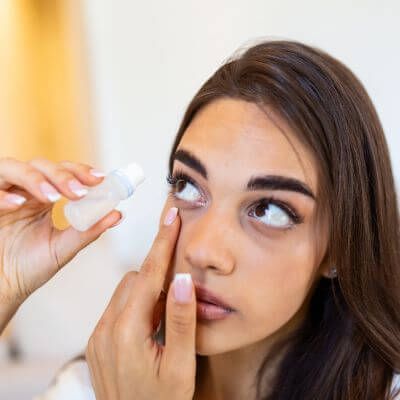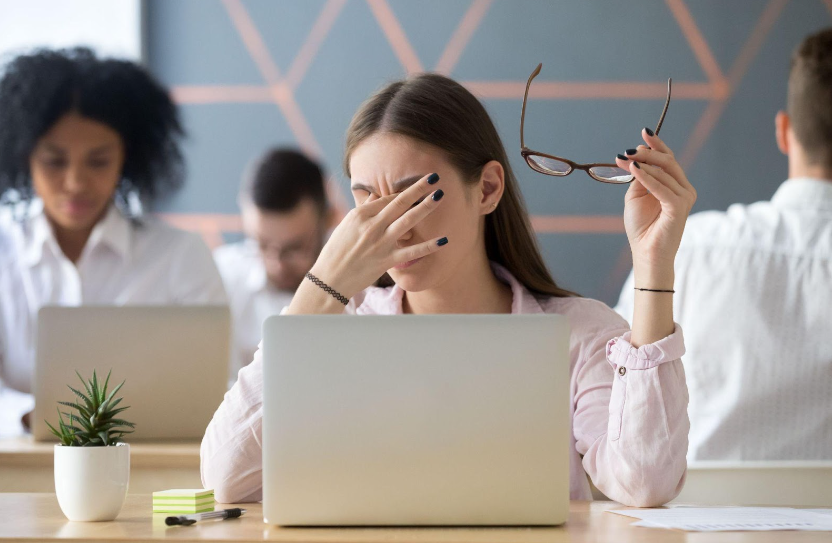How Upper Eyelid Surgery Helped 1 Man See Better When Driving & Reading
 It’s a very common assumption that heavy, sagging, or droopy upper eyelids are simply a cosmetic issue that affects only someone’s appearance. They may be aware of and concerned about how their heavy eyelids make them look more tired or older than they actually are.
It’s a very common assumption that heavy, sagging, or droopy upper eyelids are simply a cosmetic issue that affects only someone’s appearance. They may be aware of and concerned about how their heavy eyelids make them look more tired or older than they actually are.
It’s also quite common, however, that heavy upper eyelids interfere with vision , as was the case with a patient who sought help from Dr. Anzeljc a few months ago. This patient happened to know that his heavy upper eyelids were affecting his vision, particularly while he was driving, watching TV, or reading.
Not all patients are aware that their heavy upper eyelids are interfering with their vision. As part of a complete evaluation, when a patient inquires about an upper eyelid surgery, or lift, Dr. Anzeljc doesn’t just take the cosmetic appearance of the eyelids into account. He also checks the patient’s field of vision for any limitations with peripheral, or side, vision, as well as taking note of ways the patient may also be attempting to see things in front of them more clearly.
For example, many patients will compensate for vision limitations from heavy eyelids by perhaps tilting their head back or raising their eyebrows in an attempt to open their eyes wider and see better. Often times patients aren’t even aware that they’re doing so.
In addition to physically trying to compensate for reduced vision, patients with sagging or droopy upper eyelids may also experience other symptoms, such as frontal headaches, dry eye or eye irritation, and dermatitis.
How Heavy Eyelids Affect Your Vision
As mentioned, the patient pictured in this blog post was well aware that his heavy upper eyelids were interfering with his vision, which he noticed most often while driving or looking at something directly, like while watching TV or reading. When Dr. Anzeljc performed a visual field test of his central and peripheral vision, he verified that the patient was certainly right that his upper eyelids were impacting his vision.
A simple analogy is to think of an eyelid like a curtain over a window. When the eyelid, or curtain, is lower it naturally covers more of the eye than it would if it was higher. As a result, the eye is exposed to less light, and all the functions of the eye depend in differing ways on how the eye is able to receive and interpret light. Essentially, if the eye receives less light, the field of vision is reduced.
If an ophthalmologist or eye surgeon recommends upper eyelid surgery because the eyelids are affecting one’s vision, the procedure is considered medically necessary and therefore is typically covered by most insurance plans.
Causes & Treatments For Heavy Upper Eyelids
Droopy eyelids are caused by two conditions: excess skin on the eyelid, which is referred to as dermatochalasis; or a muscle weakness in the eyelid, referred to as ptosis. The man mentioned in this blog post had ptosis, which worsened over time with age.
Ptosis can also be congenital or the condition can develop from migraines, nerve damage, or a paralysis. Sometimes ptosis affects only one eye, but quite often, especially when the main cause is aging, it affects both eyelids.
With ptosis, a muscle in the eyelid called the levator muscle is weakened. The levator muscle is responsible for keeping the eyelid lifted, so when it’s weak the eyelid droops further over the surface of the eye, and sometimes covers part of the pupil.
A skilled oculoplastic surgeon can “lift” the upper eyelids by strengthening the muscle and removing excess skin. This is what Dr. Anzeljc was able to do for the patient pictured in this post. The patient had a bilateral, meaning both, upper eyelid ptosis repair and, as you can see, his lids are noticeably higher while in a neutral, resting position after surgery than they were before.
Most importantly, the patient reported a significant improvement in his peripheral, or side, vision. He quickly noticed how this affected activities like driving, watching TV, and reading.
What Is Upper Eyelid Surgery Recovery Like?
Upper eyelid surgery typically takes less than an hour to perform. Patients can expect: bruising and swelling for several weeks after surgery. Patients typically require only Tylenol and ice for pain after surgery. The eyelids are not patched and are kept open after surgery so patients can typically continue seeing the day of surgery.
Typical restrictions after surgery include:
- No heavy lifting over 5-10 lbs
- No swimming
- No eye makeup for 10 days after surgery
Upper eyelid surgeries can also be combined with cosmetic surgeries, including cosmetic upper and/or lower eyelid surgeries as well as cosmetic brow lifts , all to improve the appearance of aging.
In addition, there are also nonsurgical procedures that can improve the appearance of the brow, forehead, and heavy upper eyelids or sagging lower eyelids. Injections such as Botox and hyaluronic acid fillers can help tighten sagging skin and smooth out wrinkles around the eyes and forehead area.
If you’re curious about whether or not heavy, drooping upper eyelids might be affecting your vision in ways you’re not completely aware of, come talk to Dr. Anzlejc.
At Baptist Eye Surgeons, Dr. Andrew Anzeljc is an oculoplastic surgeon specializing in both functional, or corrective, such as upper and lower eyelid surgeries, brow lifts, and cosmetic procedures to improve the effects of aging.
To request an appointment or get directions to our Knoxville and Morristown locations, visit our website. Call us at 865-579-3920 for more information or visit us online to schedule an appointment.


MORRISTOWN
SEVIERVILLE
TENNESSEE VALLEY - LASER CENTER
TENNESSEE VALLEY - EYE CENTER



